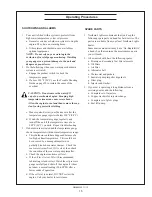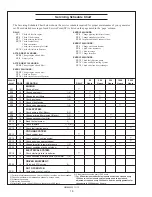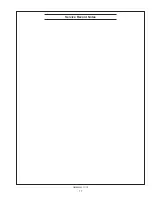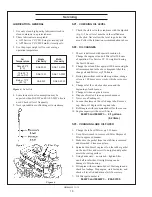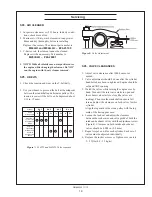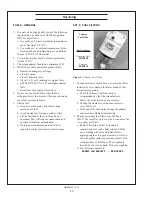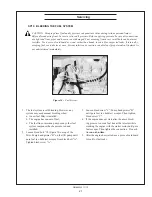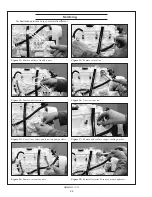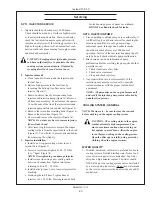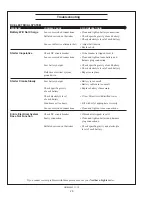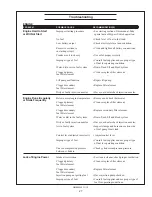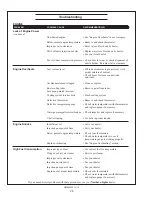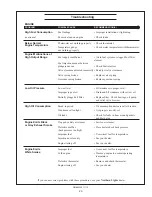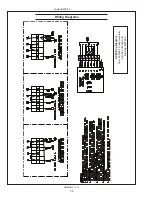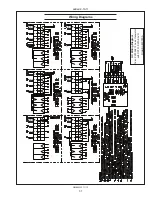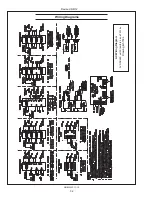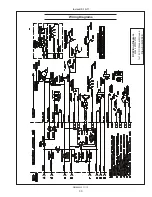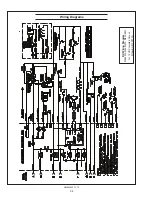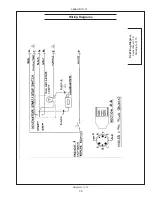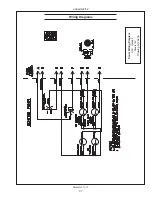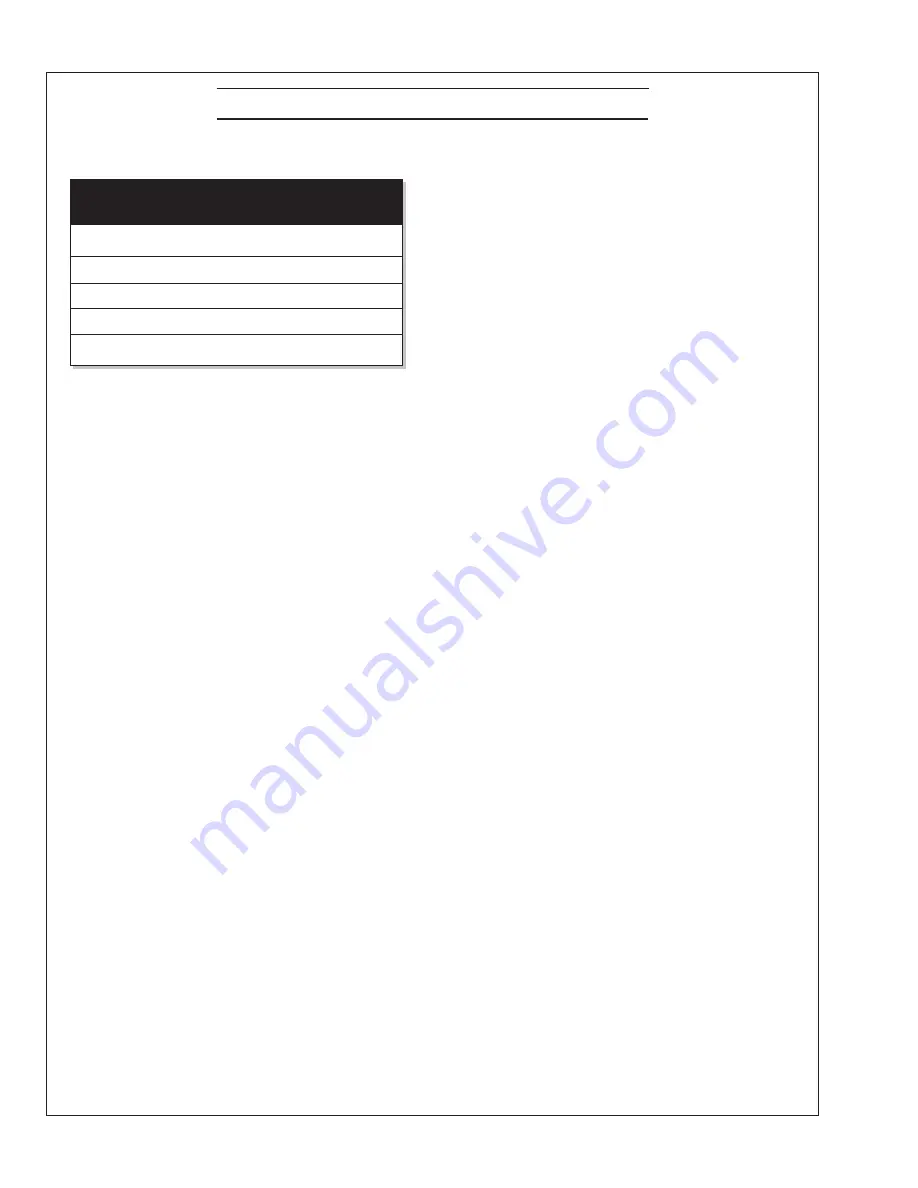
OM844W3 11/13
24
Servicing
2. Here are acceptable water quality specifications:
3. If chlorides, sulfates or total dissolved solids are
higher than the above given specification, the water
must be distilled, demineralized, or
deionized before it is used in a cooling system.
4. If total hardness is higher than 170 ppm and all other
parameters are within the given
specifications, the water must be softened before it is
used to make coolant solution.
SP13. CHECK THE COOLANT LEVEL
1. Check the coolant level each day before starting the
engine. Check the water level by removing the
pressure cap from the expansion tank.
In order to give the cooling water an opportunity to
expand, the level should be about 1 in. (2.5 cm) below
the filler cap sealing surface when the engine is cold.
2. The pressure valve in the filler cap releases when the
pressure is approximately 7 PSI (0.5 bar). Use a cap
pressure tester to check cap if you suspect it is faulty.
SP14. COOLING SYSTEM FLUSHING
1. Flush the cooling system every 2500 hours.
2. Marine sets:
a. Remove expansion tank cap and drain engine
block.
b. Open block drain cock. Remove hose from
bottom of heat exchanger tank.
c. Pour clean water into expansion tank until water
coming from drains is free of discoloration and
sediment. Let water drain completely. Close
drains and refill with recommended mixture.
3. Coolant Specifications:
Use 50% distilled water / 50% ethylene glycol
antifreeze mix. Antifreeze mixture is recommended
as a good year-round coolant.
4. Check hoses and connections and repair any leak-
age.
SP15. HEAT EXCHANGER
1. Clean the heat exchanger core after 2500 hours of
operation.
2. Drain expansion tank and heat exchanger.
3. Remove heat exchanger end covers and remove
core.
4. Clean the inside of exchanger core tubes using
a metal rod. Flush, inspect and clean again if
necessary.
5. Reassemble. Fill the cooling system, start the engine
and check for leaks.
SP17. RAW WATER PUMP
1. Change the seawater pump impeller every 1000
hours, or as needed.
2. Remove the pump end cover. Pry out the impeller
using needle-nose pliers or two screwdrivers.
Be sure you remove all pieces of failed impeller.
NOTE: Place some kind of protection under the
screwdrivers in order not to damage the pump
housing. If the impeller has broken into pieces,
remove front heat exchanger end cover and inspect
for impeller pieces. Clean inlet to heat exchanger
bundle and reassemble.
3. Clean the inside of the housing.
4. Press in the new impeller and place the sealing
washers in the outer end of the impeller center if this
has not already been done.
5. Replace the cover using a new gasket.
NOTE: Make sure that there is always an extra
impeller and cover gasket in reserve on board.
GENERATOR ENDS
The maintenance and operation recommendations
for the generator end are in a separate Owner’s
Manual. If you do not have one of these manuals,
contact your local Northern Lights dealer.
ELECTRICAL SYSTEM - GENERAL
1. Never switch battery switch off or break the circuit
between the alternator and batteries while the engine
is running. Regulator damage can result.
Parts Grains
Contaminates
per Million per Gallon
Maximum Chlorides
40
2.5
Maximum Sulfates
100
5.9
Maximum Dissolved Solids
340
20.0
Maximum Total Hardness
170
10.0
PH Level 5.5 to 9.0
revised 11-8-13
Summary of Contents for M20CRW3
Page 11: ...OM844W3 11 13 9 Notes ...
Page 19: ...OM844W3 11 13 17 Service Record Notes ...
Page 44: ......






